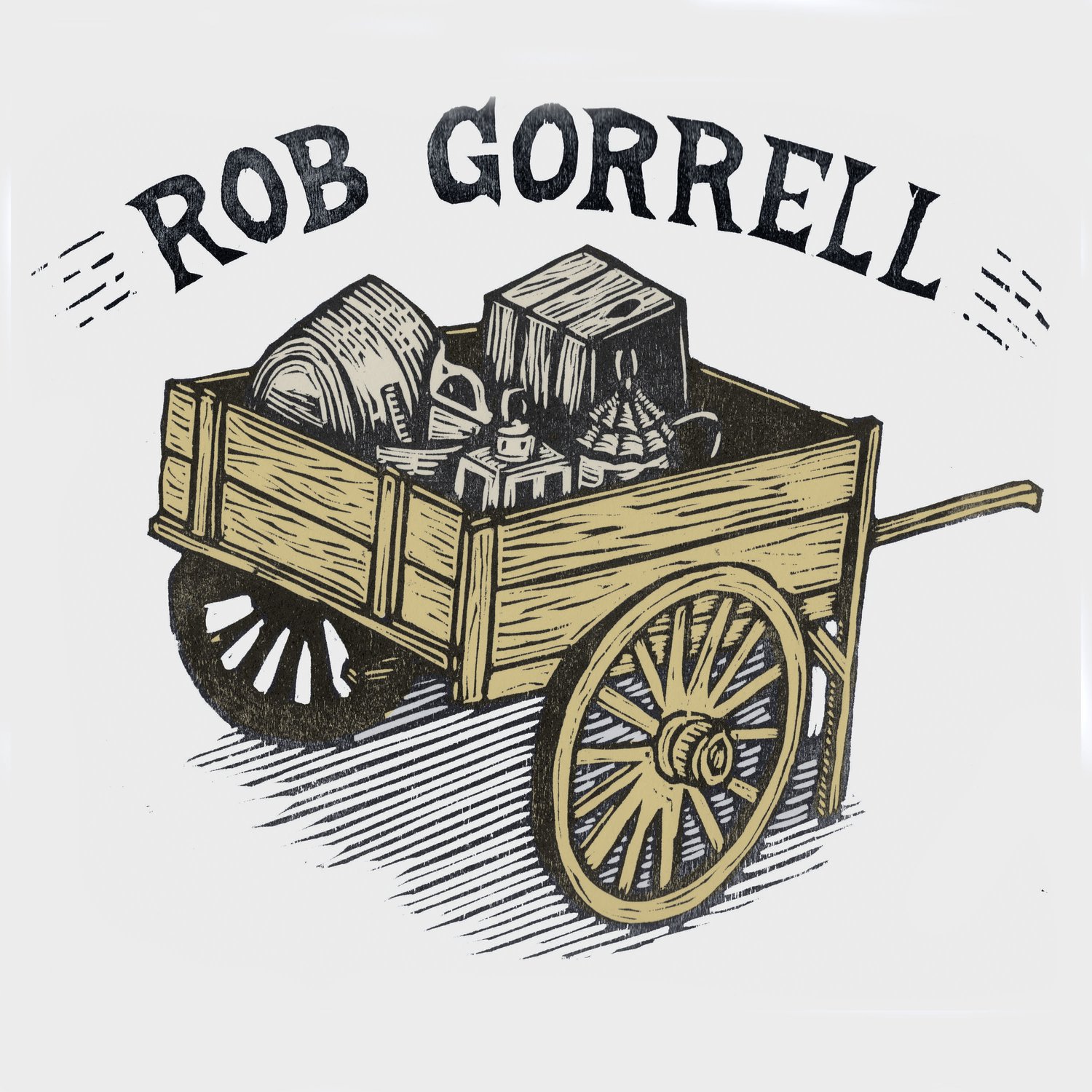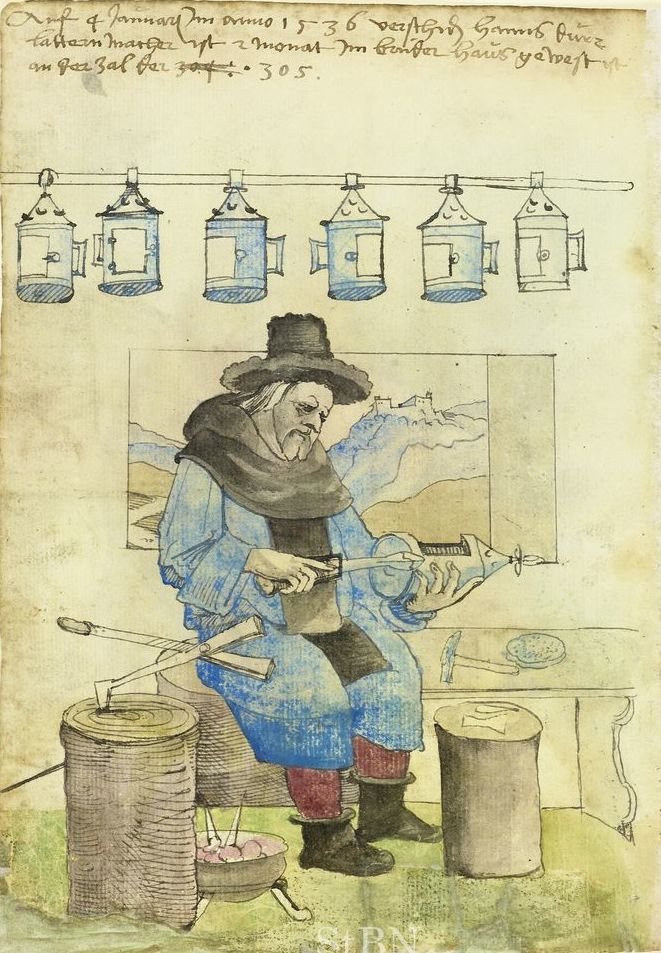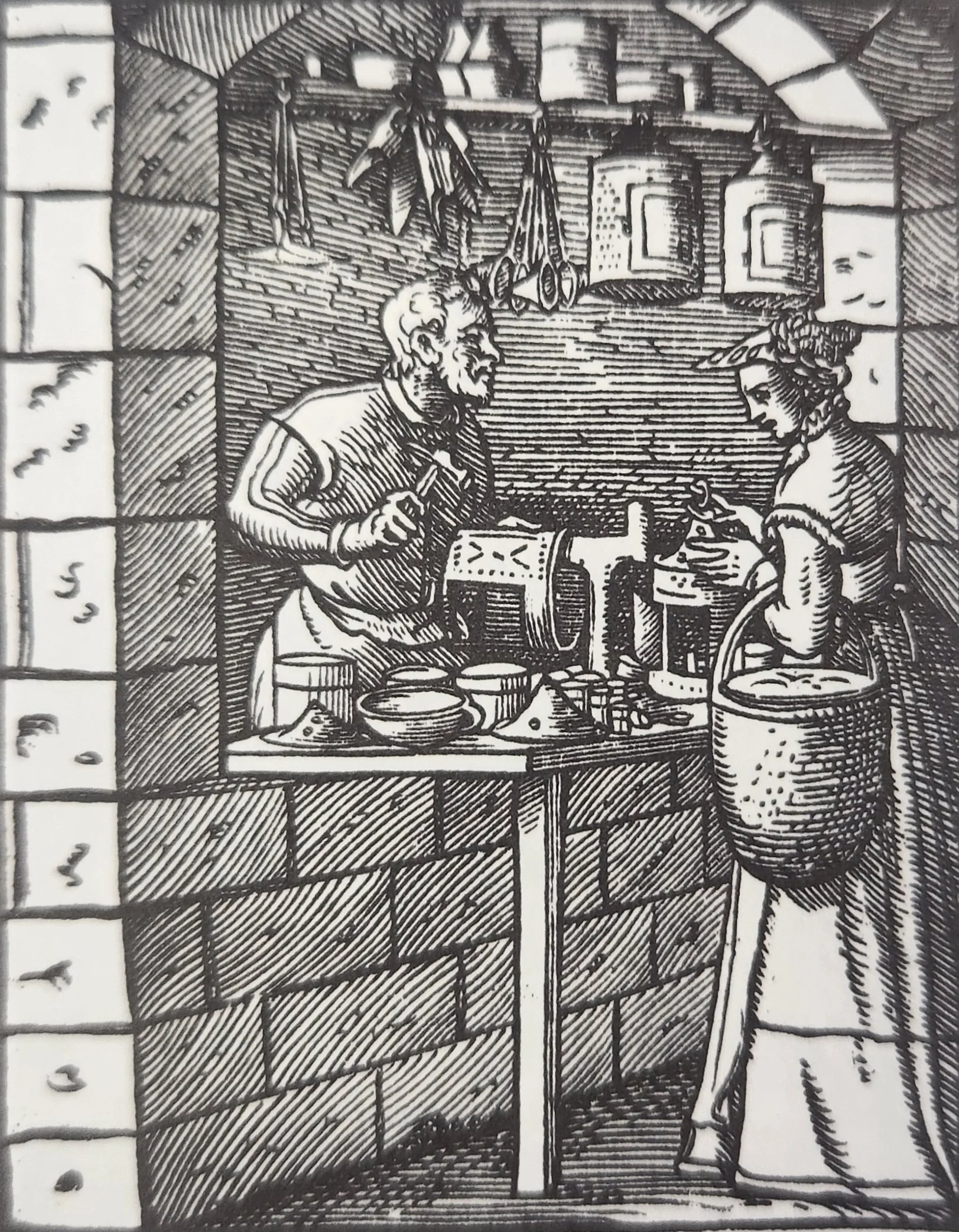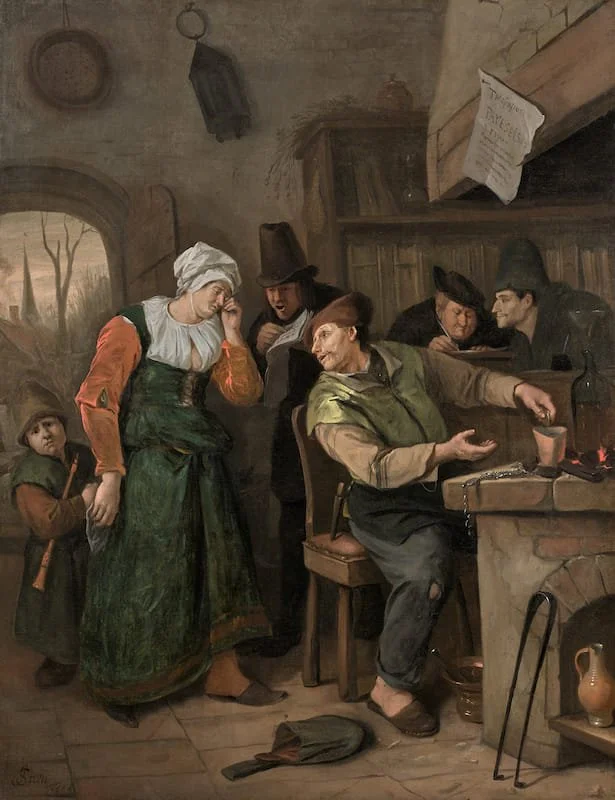Lanterns - The Early Years.
neurnberger-hausbuecher.de, The House Books of the Nuremberg Twelve Brothers Foundations, Amb. 317.2, Folio 155 verso (mendel I). 1536
So what is a lantern? Mr. Seymour Lindsay, in his 1964 book Iron and Brass Implements of the English House, defined a lantern as a “screen with transparent panels of horn, skin or glass, used for protecting an illuminating flame from wind or rain.” The term lantern comes from the Latin lantern, with lanthorn being a 16th century corruption of lantern (pp 51). F.W. Robins wrote that the primary purpose of a lantern is to “shield a light from the effects of wind and weather and thus enable it to be used outdoors." in the 1939 book The Story of the Lamp (and the Candle).
Those two concise statements throw a cover over a huge variety of designs and styles of ways to keep a candle dry. With 900 years of lanterns to discover, there is no end to the variety of designs available to study and try to recreate. I really like the images from the 1500s showing artisans making tin lanterns, such as the image above. One can clearly see the brazier for heating the copper soldering irons, Bench snips, hammer, and what appears to be some additional parts on the stump. These tools are not radically different today.
One of the things that makes studying and trying to recreate historically correct tinware is the fact that we are using some of the same tools and techniques that would not have looked terribly out of place in a 1600’s tinsmith shop. It was not until the early 19th century that the rotary metal working jennies were developed and pretty much replaced many hammer and stake techniques.
The Alchemist and his Crying Wife, by the Dutch artist Jan Steen, 1668.
This image of “The Lantern Maker “ is from the 1578 Book of Trades and clearly shows an artisan making a punched tin lantern over a stake while a shopper looks on.
In a 1698 Christoph Weigel and Casper Luiken wrote “The Flaschner/Lantern makers, or, as they are called in other places Klempner, Blechschlager. By Iron, copper, or brass, they are beaten to thin sheet metal/ The Flaschner creates human life, not lowly soot. He manufactures all hand lanterns, barn lanterns…dark lantern, or masked lantern…common or horn lanterns…. (From: Lelegren, Shay, The Complete Tinsmith & Tinman’s or Tinner’s Trade or All I Know about the Art and Mystery of Tinsmithing. Tinsmith Museum of America, 2016, p 10).
During this early period of lantern making, copper and brass lanterns were common, though I have not studied them much yet. I have been concentrating on the tinplate or “sheet iron” styles. These lanterns were predominately round with horn panes or were tin-punched. In the upcoming posts I will be writing more about horn panes, which was a whole separate industry in Europe at the time.
Notice the lantern on the wall in this painting by Ornelis Bega, 1631-34.
Oh there are so many lanterns to come. This is going to be more fun than Sheldon Cooper’s Fun with Flags. Stay tuned.




